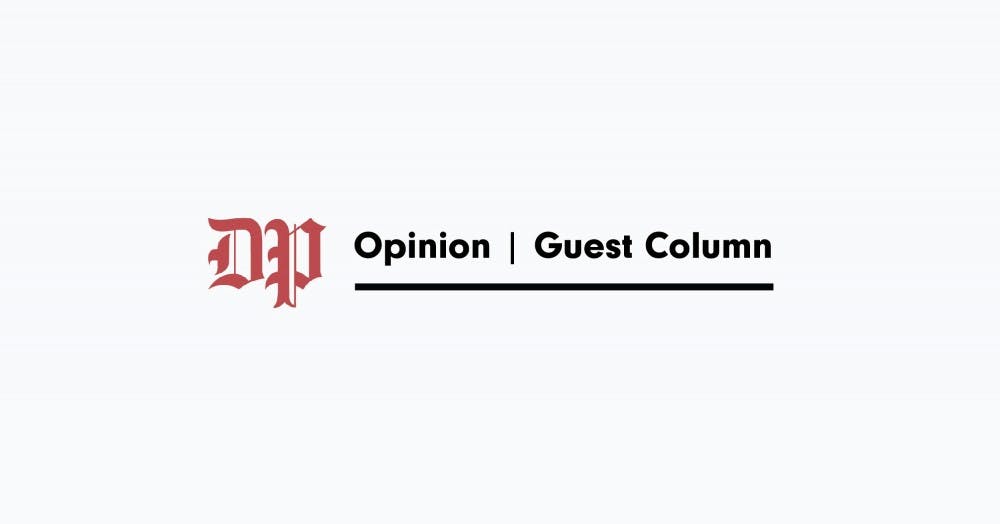The exchange of ideas, through testing assumptions and addressing conflicting evidence, is the intellectual core of Penn’s academic mission. In The Daily Pennsylvanian, Taylor Becker extols “free speech and the competition of ideas” along with “intellectual rigor” as crucial to the University. Yet, as Julia Lesko explained in her Feb. 28 column, the University Board of Trustees attempted to extinguish this competition of ideas by rejecting fossil fuel divestment on the basis of a 19-word claim sans data and analysis. More than fundamentally contradicting Penn’s academic stature, this anti-intellectualism by the Board of Trustees has harmed the endowment’s financial returns.
Critics often claim divestment hurts performance. How would Penn’s endowment have performed if it divested fossil fuels? Divestment’s impact can be quantified by comparing a market index with its counterpart excluding companies holding fossil fuel reserves. The Bloomberg data show that from June 30, 2013 to March 23, 2017, divestment would have generated higher returns with lower risk.
Using All Country World Index (global), we find:
Total returns: 35.2 percent. Annualized volatility: 10.88 percent.
Fossil-free returns: 39.7 percent. Fossil-free volatility: 10.67 percent.
Using Standard & Poor’s 500 (domestic), we find:
Total returns: 58.0 percent. Annualized volatility: 12.67 percent.
Fossil-free returns: 63.7 percent. Fossil-free volatility: 12.58 percent.
Moreover, the fossil-free returns less the non-divested returns have a negative beta against the market (-2.2 percent for ACWI and -1.0 percent for S&P), meaning these superior returns are not at the expense of higher market exposure or lowered diversification. These improvements to risk-adjusted returns for both markets still hold over June 30, 2016 to present — implying divestment’s financial benefits continue under recent favorable oil prices as well as President Donald Trump.
Had Penn divested in June 2013, after 2015 College graduate Sara Allan first advocated fossil fuel divestment at University Council Open Forum, we would have made an extra $73.2 million; had Penn divested in June 2016, we would have made $8.9 million extra (all with lower risk). These values are based on conservatively applying the above returns improvements to just Level 1 equity, i.e. liquid and readily sellable, from Penn’s financial reports. In context, the $8.9 million that Penn lost over less than a year by not divesting fossil fuels would have paid for undergraduate student government’s 2016-2017 budget 3.8 times.
Beyond historical performance, fossil fuel divestment is wise for the future. Bevis Longstreth, former commissioner of the Securities and Exchange Commission appointed by President Ronald Reagan, explains in “The Financial Case for Divestment of Fossil Fuel Companies by Endowment Fiduciaries" that fossil fuel proven reserves of coal, oil and natural gas vastly exceed the greenhouse gas budget for limiting warming to two degrees Celsius. Effectively limiting climate change contradicts the business model of fossil fuel extraction companies, so Longstreth views fossil fuel divestment as “both the prudent course to follow and ethical thing to do.”
The carbon bubble is also identified by Robert Litterman, who during his 23-year tenure at Goldman Sachs in quantitative strategies co-developed the Black-Litterman model with Fischer Black. Litterman urges that “[h]igher-education institutions that don’t divest fossil fuel companies because it’s the right thing to do should divest ‘stranded assets’ because it makes financial sense.” Under Litterman’s guidance, the World Wildlife Fund has divested exposure to coal and tar sands, increasing market-uncorrelated risk-adjusted returns reinforcing the above calculations.
Critics may disbelieve the carbon bubble by citing the efficient market hypothesis (Dillon Weber, member of the ad hoc committee rejecting divestment, has publicly made this argument). However, as 1989 Wharton MBA graduate Bradford Goz explained at an open forum in December 2015, the carbon bubble can exist because markets are not universally efficient — supported by extensive economics research by Sanford Grossman and Joseph Stiglitz and Robert Shiller — the first taught at the Wharton School and the latter two won Nobel Prizes. Fossil fuel valuations suffer from behavioral and institutional biases, by assuming proven reserves deplete completely and insufficiently incorporating long-term risks. Despite reserves already exceeding the carbon budget, fossil fuel managers continually use shareholder resources to expand more reserves in what the Harvard Business Review calls an “overvaluation trap.”
The Board of Trustees, understandably well-meaning to protect University resources, have ironically worsened our risk-adjusted returns. They simultaneously ignored Penn’s exciting opportunity to be a leader in impact investing. Given a $5.7 trillion green infrastructure funding gap and growing public sector deficits, MBA student Yann Manibog writes in a Kleinman Center article that private investors who provide capital to scale up existing and affordable clean energy sources can “make a fortune while doing some good for the world.”
Fossil Free Penn activists strive for climate justice; they are also defenders of rationality and empiricism. Penn ought to prioritize people over profits; even ignoring the former, Penn ought to divest solely in the interest of fiduciary duty.
THOMAS LEE is a Wharton and Engineering senior from Taipei, Taiwan studying finance, computer science and systems engineering. His email address is thomlee@wharton.upenn.edu.
The Daily Pennsylvanian is an independent, student-run newspaper. Please consider making a donation to support the coverage that shapes the University. Your generosity ensures a future of strong journalism at Penn.
Donate




